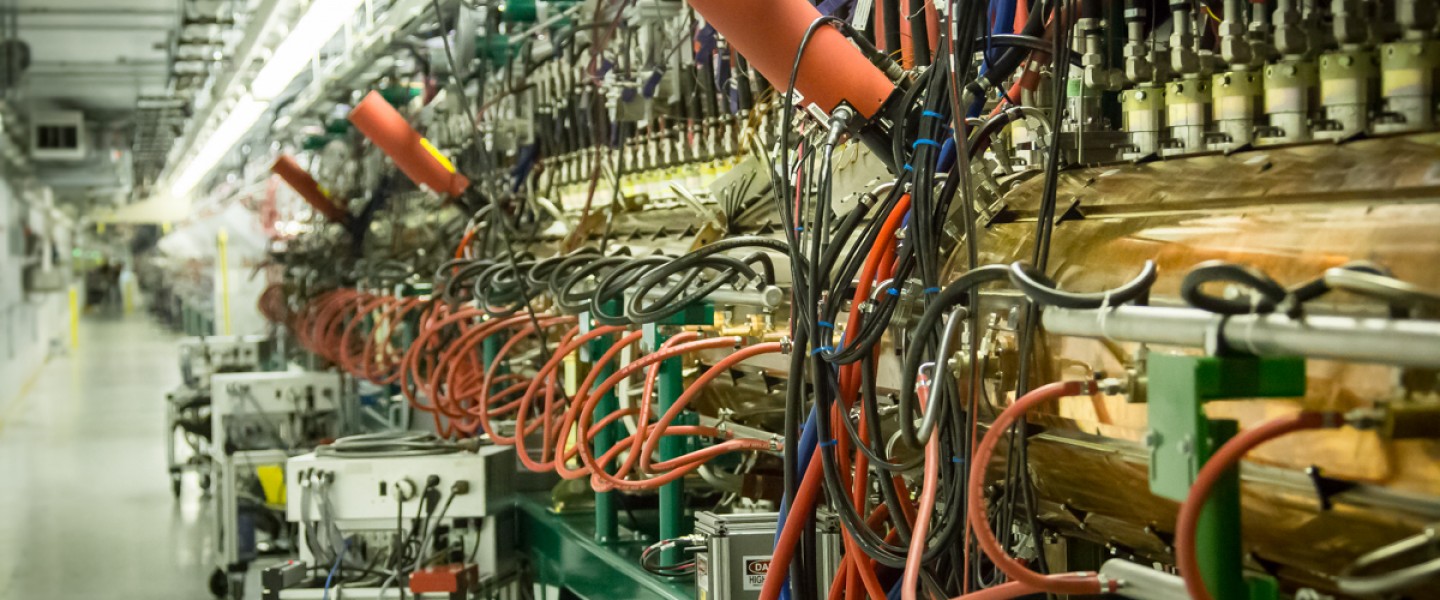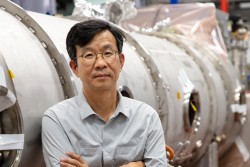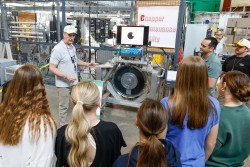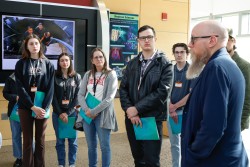Neutron Science at Oak Ridge National Laboratory
The Neutron Sciences Directorate (NScD) seeks to answer big science questions about the fundamental nature of materials at the atomic scale. By answering big science questions, neutrons help spur innovations that improve our daily lives: more powerful computers, more effective drugs, longer lasting batteries, and improved armor for the military.
NScD achieves its mission by delivering a world-class neutron science program made possible by the safe and reliable operation of two of the most advanced neutron scattering facilities in the world: the High Flux Isotope Reactor (HFIR) and the Spallation Neutron Source (SNS). These two facilities are funded by the US Department of Energy’s Office of Science and Office of Basic Energy Sciences. In partnership with the University of Tennessee, NScD operates the Shull Wollan Center—a Joint Institute for Neutron Sciences to promote excellence in advancing the application of neutrons to the forefront of science and industry, and it is dedicated to the training and education of future researchers.
HFIR and SNS are co-located with ORNL’s Building Technologies Research and Integration Center (BTRIC), Carbon Fiber Technology Facility (CFTF), Center for Nanophase Materials Sciences (CNMS), Center for Structural Molecular Biology (CSMB), Manufacturing Demonstration Facility (MDF), National Transportation Research Center (NTRC), and the Oak Ridge Leadership Computing Facility (OLCF). This group of cutting-edge research facilities provides a diverse set of tools and expertise needed for experiments across a wide range of fields including biology, materials and energy sciences, physics, engineering, and chemistry.
Few neutron facilities around the world can match the power and scientific capabilities SNS and HFIR offer, coupled with close access to additional world-leading research facilities. As a result, thousands of researchers from around the world apply each year to complete their research at HFIR and SNS. The most promising proposals are selected by a scientific panel through peer review. Scientists who have their proposals selected use the facilities and instruments at SNS and HFIR free of charge in return for making their data and findings public.
Neutron Scattering Science: Where are the atoms and what are they doing?
Neutrons are one of the particles that make up matter. Neutrons are abundant in the universe, making up more than half of all visible matter. They are also ideal for certain types of research.
Neutron scattering provides information about the positions, motions, and magnetic properties of materials. When a beam of neutrons is aimed at a sample, many neutrons will pass through the material. But some will interact directly with atomic nuclei and “bounce” away at an angle, like colliding balls in a game of pool. This behavior is called neutron scattering.
Using special detectors, scientists count scattered neutrons, measure their energies and the angles at which they scatter, and map their final position. This makes it possible for scientists to glean details about the nature of materials ranging from liquid crystals to superconducting ceramics, from proteins to plastics, and from metals to metallic glass magnets.
These details help lead to advances that can lower the cost, improve the efficiency, and improve the safety of products we use every day like:
How Can Neutrons Be Used for Research?
Neutrons have many properties that provide details about the structure and motion of atoms that cannot be easily obtained with other research techniques. These properties make them ideal for certain types of research.
![]()
Neutrons are nondestructive and highly penetrating, which makes it possible to study things like polymers, proteins and other biological materials, and mechanical components in real time and in real-world environments without destroying them. These qualities also provide details about the location and motion of atoms throughout a material instead of just under the surface, somewhat like a Magnetic Resonance Imaging (MRI) scan at a doctor’s office. Neutrons from SNS and HFIR have been used by scientists to discover new insights into the structure and motion of proteins, polymers, and car engine components while they are operating in real time.
![]()
Unlike protons and electrons, neutrons have no electrical charge, however, they do have a magnetic moment. This makes them uniquely sensitive to magnetism at the atomic scale, providing researchers with information about magnetic phenomena in materials that cannot be easily obtained with any other technique. Scientists have used this property to improve the capacity of data storage, make sensors more effective, increase the efficiency of electronic devices, and enhance our understanding of quantum phenomena, the key to unlocking advances in quantum computing.
![]()
Because of their unique sensitivity to hydrogen, neutrons can be used to precisely locate hydrogen atoms, enabling a more accurate determination of molecular structure, which is important for the design of new therapeutic drugs. Neutrons scattered from hydrogen in water can locate bits of moisture in fighter jet wings—signs of microscopic cracking and early corrosion that pinpoint the part of a wing that should be replaced. Neutrons can also be used to locate other light atoms among heavy atoms. This capability is helping scientists to open the field of quantum superstates such as superconductivity and superfluidity.
![]()
Because the energies of thermal neutrons closely match the energies of atoms in motion, neutrons can be used to track molecular vibrations and movements of atoms of a protein during catalytic reactions. Recent studies with neutrons have revealed structural differences between the normal and pathological forms of a protein involved in Huntingtin's disease, and that research is moving forward to study the protein malformation responsible for Alzheimer’s and Parkinson’s diseases.














